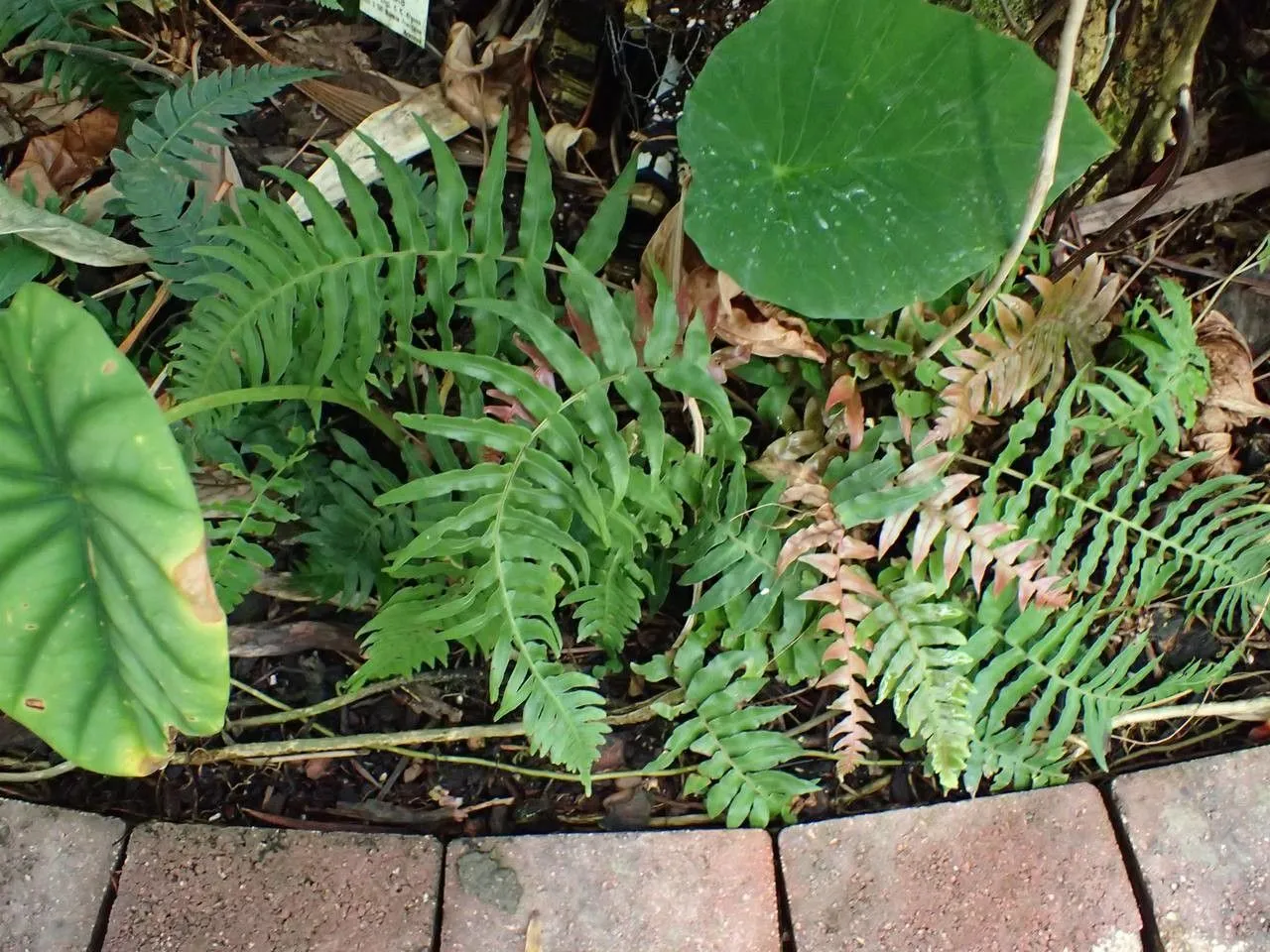
Author: L.
Bibliography: “Sp. pl. 2:1077. 1753 “”orientale””; Sp. pl. ed. 2, 2:1534. 1763″
Year: 1753
Status: accepted
Rank: species
Genus: Blechnum
Vegetable: False
Observations: Mexico to Trop. America
The New World Midsorus Fern, scientifically named Blechnum occidentale, is a fascinating species that belongs to the Aspleniaceae family. First described by the renowned botanist Carl Linnaeus in his seminal work “Species Plantarum” in 1753, this fern has intrigued botanists for centuries. Its initial classification under the name “orientale” has evolved over time, with further distinctions made in the second edition of “Species Plantarum” published in 1763.
Found predominantly from Mexico through Tropical America, the geographical range of Blechnum occidentale is noteworthy. This broad distribution across varying tropical climates illustrates the fern’s adaptability and resilience.
The fern is easily recognizable by its lush, feather-like fronds, which provide a rich texture and vibrant green hue to the forest understory. As with many members of the Aspleniaceae family, the New World Midsorus Fern contributes significantly to its ecosystem, often playing a role in soil stabilization and providing a microhabitat for a variety of organisms.
Botanical enthusiasts and researchers alike continue to study Blechnum occidentale, drawn by its historical significance and ecological importance. The fern’s presence from the warm climates of Mexico down through the diverse forests of Tropical America highlights its adaptability and enduring appeal across botanical disciplines.
Eng: new world midsorus fern, hammock fern
Deu: östlicher rippenfarn
En: New World midsorus fern, Hammock fern
De: Östlicher Rippenfarn
Taken Apr 17, 2019 by OTS – O. Vargas (cc-by-nc-sa)
Taken Feb 28, 2021 by Disa Villada (cc-by-sa)
Taken Aug 10, 2019 by David Schmielden (cc-by-sa)
Taken Jul 24, 2021 by Trap Hers (cc-by-sa)
Taken Feb 5, 2017 by Yoan MARTIN (cc-by-sa)
Taken Jul 24, 2021 by Trap Hers (cc-by-sa)
Taken Feb 5, 2017 by Yoan MARTIN (cc-by-sa)
Taken Oct 21, 2015 by OTS – Chaves-Fallas, José Miguel (cc-by-nc-sa)
Taken Nov 8, 2013 by EOL − Alexis López Hernández (cc-by-nc)
Taken Nov 8, 2013 by EOL − Alexis López Hernández (cc-by-nc)
Taken Nov 8, 2013 by EOL − Alexis López Hernández (cc-by-nc)
Taken Feb 5, 2017 by Yoan MARTIN (cc-by-sa)
Taken Apr 17, 2019 by OTS – O. Vargas (cc-by-nc-sa)
Taken Oct 21, 2015 by OTS – Chaves-Fallas, José Miguel (cc-by-nc-sa)
Taken Oct 21, 2015 by OTS – Chaves-Fallas, José Miguel (cc-by-nc-sa)
Taken Oct 21, 2015 by OTS – Chaves-Fallas, José Miguel (cc-by-nc-sa)
Taken Oct 21, 2015 by OTS – Chaves-Fallas, José Miguel (cc-by-nc-sa)
Taken Apr 17, 2019 by OTS – O. Vargas (cc-by-nc-sa)
© copyright of the Board of Trustees of the Royal Botanic Gardens, Kew.
© copyright of the Board of Trustees of the Royal Botanic Gardens, Kew.
© copyright of the Board of Trustees of the Royal Botanic Gardens, Kew.
Growth habit: Forb/herb
Family: Myrtaceae Author: (F.Muell.) K.D.Hill & L.A.S.Johnson Bibliography: Telopea 6: 402 (1995) Year: 1995 Status:…
Family: Rubiaceae Author: Pierre ex A.Froehner Bibliography: Notizbl. Bot. Gart. Berlin-Dahlem 1: 237 (1897) Year:…
Family: Sapindaceae Author: Koidz. Bibliography: J. Coll. Sci. Imp. Univ. Tokyo 32(1): 38 (1911) Year:…
Family: Asteraceae Author: A.Gray Bibliography: Pacif. Railr. Rep.: 107 (1857) Year: 1857 Status: accepted Rank:…
Family: Fabaceae Author: Medik. Bibliography: Vorles. Churpfälz. Phys.-Ökon. Ges. 2: 398 (1787) Year: 1787 Status:…
Family: Aspleniaceae Author: (Cav.) Alston Bibliography: Bull. Misc. Inform. Kew 1932: 309 (1932) Year: 1932…